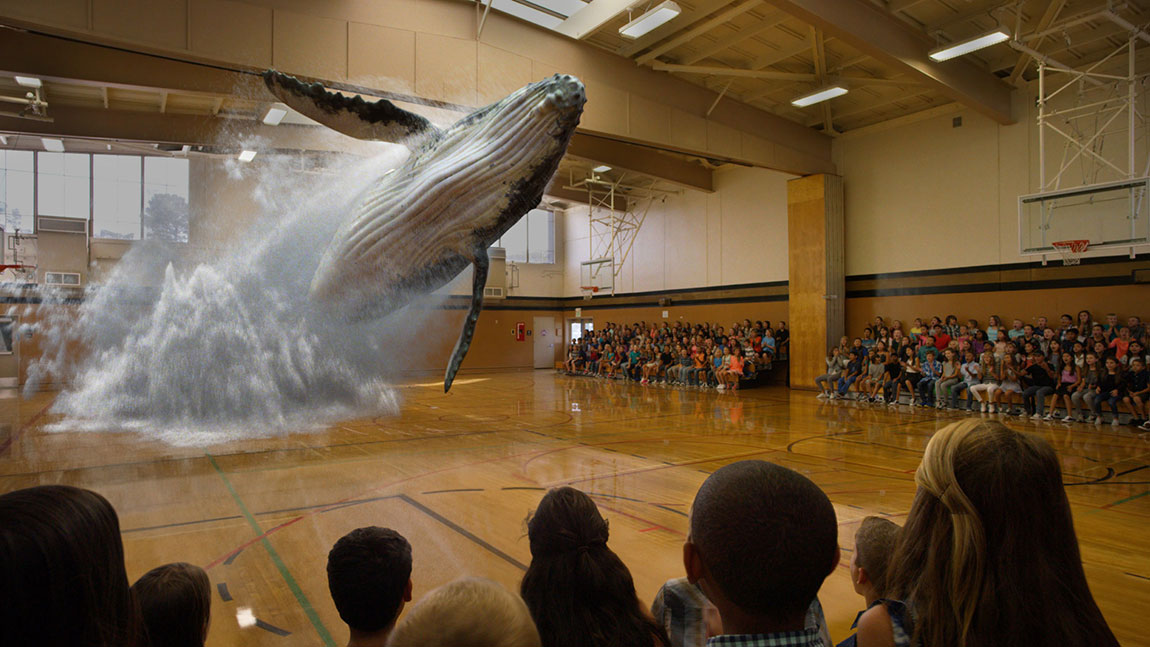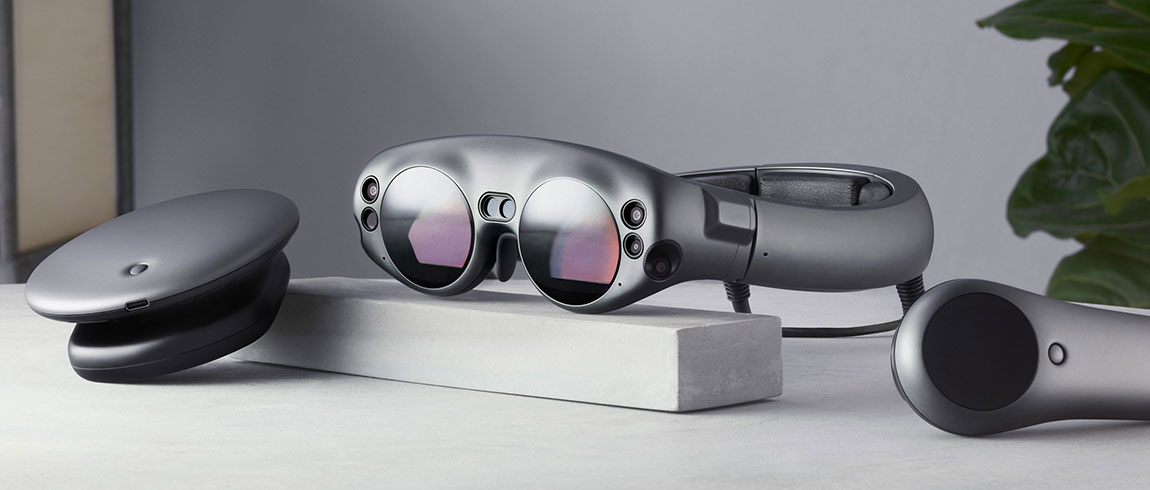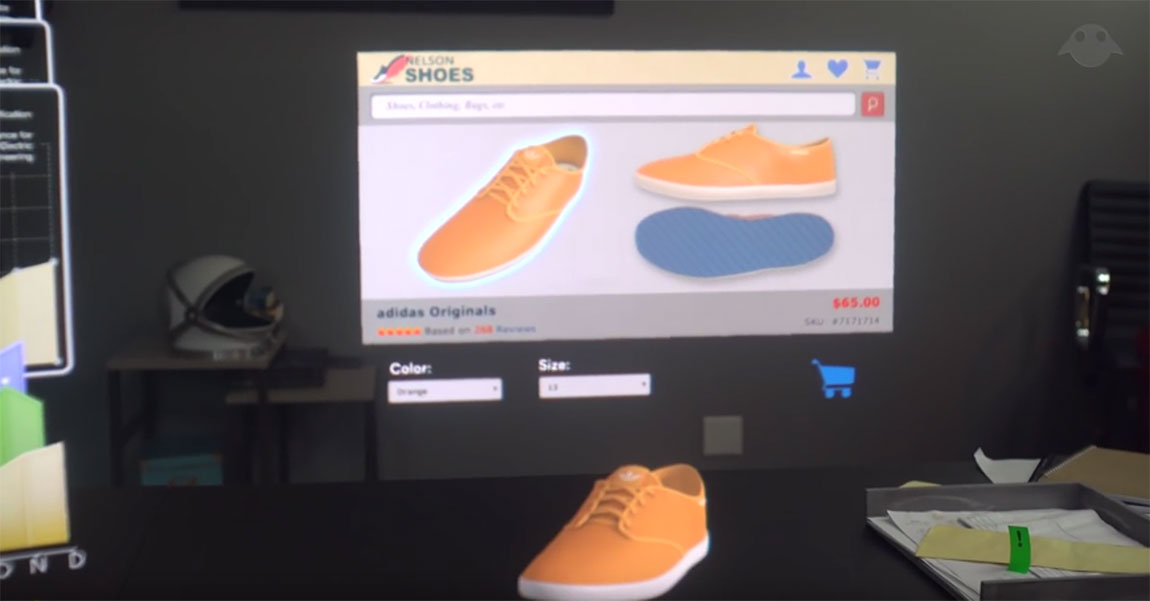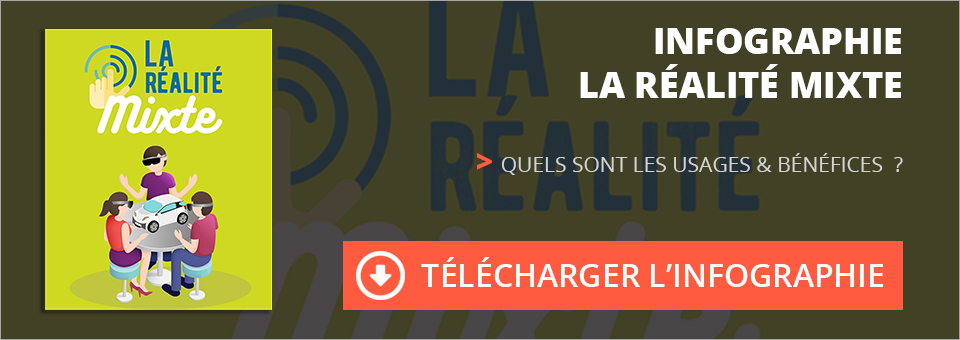Le mystère autour de la start-up Magic Leap se lève progressivement. Après de multiples fantasmes, la réalité revient au galop et la société nous laisse découvrir très brièvement son dispositif de lunettes de réalité augmentée. Un premier lancement à destination des développeurs est prévu pour 2018.
Petite start-up deviendra grande !
Le 15 Mars 2015, La petite start-up américaine Magic Leap sort une vidéo sur YouTube présentant un court clip d’une technologie de réalité augmentée qu’ils développent. Le ton est donné : le rendu visuel est magnifique et les promesses affichées sont colossales. Avec cette vidéo, le petit studio passe d’un anonymat presque complet à une ascension médiatique inédite. Le monde de la tech américaine est en effervescence et 9 mois plus tard, la start-up lève déjà 1 milliard de dollars de fond, propulsée par des investisseurs comme Alibaba ou encore Google. Dès 2016, des partenariats avec Disney et notamment pour la licence Star-Wars sont signés. Un problème subsiste malgré tout autour de cette incroyable ambition : Il n’y a aucun aperçu du matériel utilisé et les vidéos ne montrent que des effets spéciaux de très bonne facture. Les rumeurs vont bon train et les critiques fusent autour du mystère Magic Leap. Du moins c’était le cas jusqu’au mois de décembre 2017

Magic Leap donne naissance à des lunettes de réalité augmentée
En effet, après des années d’effets d’annonce, de clips vidéo toujours plus spectaculaires et de records de levées de fonds, l’entreprise américaine dévoile le 20 décembre 2017 son support de réalité augmentée. Baptisé Magic Leap One, il prend la forme de lunettes au design « Steampunk » reliées à un boitier se logeant à la ceinture. Une petite manette de commande est également comprise dans le pack. L’ensemble sera dans un premier temps vendu sous la forme d’un kit de développement réservé aux professionnels.
Très peu d’informations sont disponibles sur ce que le boitier renferme. Il s’agirait d’un petit ordinateur miniaturisé et surpuissant qui permettrait l’affichage d’éléments en 3D, la détection de l’espace et de la position de l’utilisateur. Le casque, quant à lui, semble équipé de plusieurs caméras et de capteurs. On ne peut alors s’empêcher de penser au casque de réalité mixte Hololens de Microsoft qui utilise ce type de format du « tout embarqué ». La différence repose donc uniquement sur l’ambition fièrement affichée de Magic Leap de faire apparaitre des éléments en 3D parfaitement intégré dans la réalité. En effet, avant de se lancer dans un dispositif de visualisation, la start-up développait déjà un système nommé « Lightfield » permettant d’imiter notre perception visuelle et de donner l’illusion à l’utilisateur que les objets virtuels appartiennent au réel.

Des exemples d’usages anticipés par la start-up.
Tout ceci est évidemment à prendre avec des pincettes, car une chose est sûre : Il est difficile de prévoir les usages lors de la sortie d’un dispositif de réalité augmentée ou virtuelle. La réalité virtuelle, par exemple, était destinée dans un premier temps aux joueurs de jeux vidéo. Les professionnels s’en sont finalement emparés à des fins diverses : formations, visites virtuelles ou encore configurateurs d’habitation. Comme on le sait, ce sont surtout les utilisateurs qui font les usages et non les sociétés qui commercialisent les supports.
Parenthèse faite, depuis l’annonce de la sortie de leur produit, Magic Leap imagine déjà plusieurs types d’usages à plus ou moins long terme sur son site internet. On y retrouve beaucoup de similarité avec le Hololens de Microsoft.
Tout d’abord sur le retail. Magic Leap mise sur des boutiques virtuelles dans lesquelles on pourrait se balader depuis chez soi. L’idée n’est pas totalement folle puisque plusieurs marques proposent déjà des catalogues en réalité augmentée sur tablettes et smartphones.
La start-up voit également ses lunettes sur la tête des designers et autres architectes du monde entier. En effet, le Magic Leap One semble se profiler parfaitement pour les créateurs avec le partage de maquette 3D. Rien d’extravagant non plus ici puisque son cousin, le casque de réalité mixte Hololens, est déjà utilisé par Ford comme un outil d’aide à la création de projet, notamment pour remplacer les classiques maquettes en argiles.
Les jeux vidéo sont également à l’honneur. La société américaine avait déjà diffusé une vidéo d’un jeu de tir à la première personne se déroulant dans ses propres locaux. La volonté est certes là, mais il semble difficile d’avoir ce type d’usage dans un premier temps, notamment car le prix ne sera sûrement pas adapté à une commercialisation pour le grand public.
Enfin, il est question d’un nouveau genre de réseau social utilisant cette technologie pour interagir avec d’autres porteurs de ces lunettes de réalité augmentée. Cet usage est selon nous le moins probable dans l’immédiat mais a le mérite de proposer une finalité ambitieuse.

Un pari difficile à tenir pour Magic Leap
En mettant la barre aussi haute, Magic leap ne se laisse pas beaucoup de marge de manœuvre. Avec plus d’1.9 milliards de dollars de fonds levés et des vidéos plus impressionnantes les unes que les autres, la start-up américaine est largement attendue au tournant. Avec ces premières lunettes commercialisées, deux issues s’offrent à l’entreprise : une révolution ou un échec qui lui sera probablement fatal, tant les attentes sont importantes.
Une chose est certaine, 2018 sera l’année de la réalité mixte !


